The federal eviction moratorium expires in January. It could leave 40 million Americans homeless.
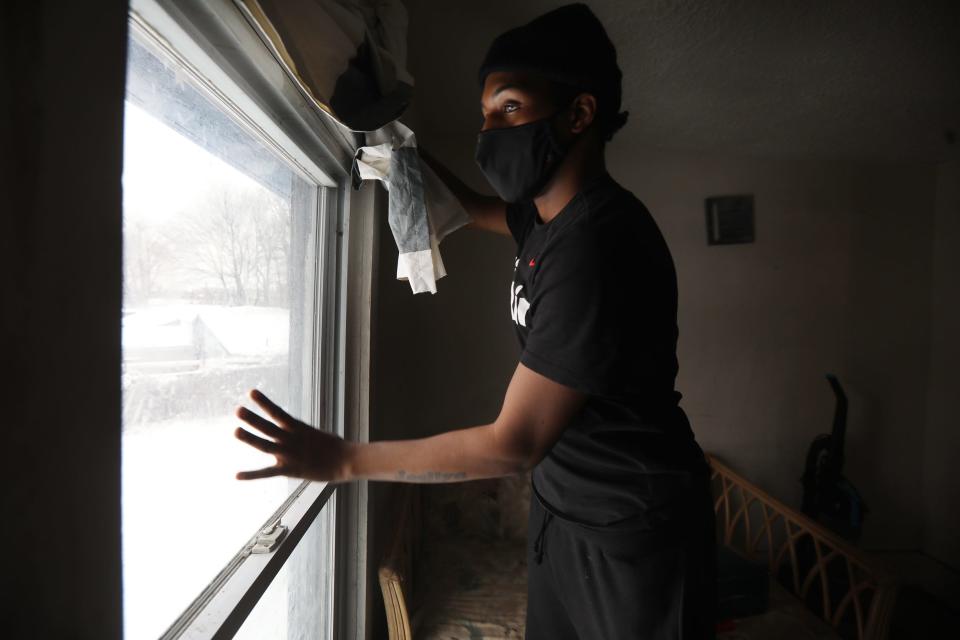
Rochester, N.Y. — It’s safe to say that Shayla Black’s life is not what she imagined when she left her job in the magazine industry in January, feeling like she needed a change.
Before long, her quest for new opportunities was upended by massive job losses driven by the COVID-19 crisis. As Black’s finances started to dwindle and the rent continued to accrue at her second-story Harlem apartment, the 28-year-old found herself having to make some difficult choices.
“You’re just told in a society, like, you pay your rent by any means necessary,” Black said. “I was ready to pay my very last to pay my rent. But how would I pay my electric? How would I get food?”
This fall, her landlord slipped a notice under her door: Either pay thousands in back rent or risk eviction, it said – despite a national moratorium prohibiting evictions for non-payment of rent.
“No one should ever have to experience the threat of being pushed out of their home,” Black said. “Especially in the middle of a pandemic.”
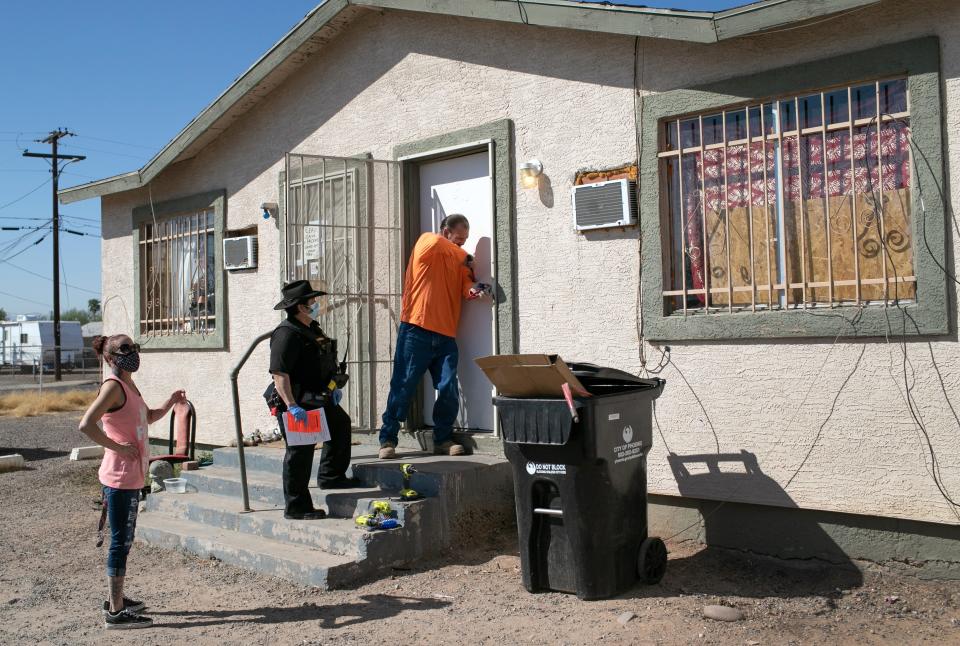
Black is one of millions on the verge of being evicted with the federal eviction moratorium set to expire at the end of January, unleashing what advocates say could be a housing catastrophe of historic proportions: Without federal intervention, they fear, as many as 40 million people could be displaced amid an ongoing and still worsening pandemic.
“We’re facing potentially the worst housing and homelessness crisis in our country’s history,” said Diane Yentel, CEO and president of the National Low Income Housing Coalition in Washington, D.C.
The eviction moratorium approved by the Centers for Disease Control and Prevention was originally set to end Dec. 31. It was expected to be extended through January by Congress under a $900 billion COVID-19 relief package that also includes offering $25 billion in emergency rental assistance – the figure requested by the National Low Income Housing Coalition in a letter submitted last week to the CDC and co-signed by 1,500 housing advocacy organizations.
“The least the federal government can do during a once-in-a-century pandemic is assure each of us that we’re not going to lose our homes in the middle of it,” Yentel said. The $25 billlon, she said, was not nearly enough to meet the actual need, but it was a step in the right direction.
Related: Evictions put vulnerable Americans in jeopardy during pandemic
Will new coronavirus relief package be enough? Black and Latino landlords could lose big
Black, Latino renters hit hard by COVID crisis
A study by global investment firm Stout estimates up to 14 million households could already be close to eviction, with a rental shortfall of more than $24 billion – a number compounded by the economic fallout of the pandemic, which has put many out of work and at risk of displacement for the first time in their lives. The situation has been particularly dire for Black and Latino households, which are disproportionately affected by job loss and infection rates.
“The vulnerability is much greater, and that’s the real issue,” said Abigail Staudt, managing attorney for the Legal Aid Society of Cleveland’s housing law practice. “We have an unprecedented number of people who are housing-unstable.”
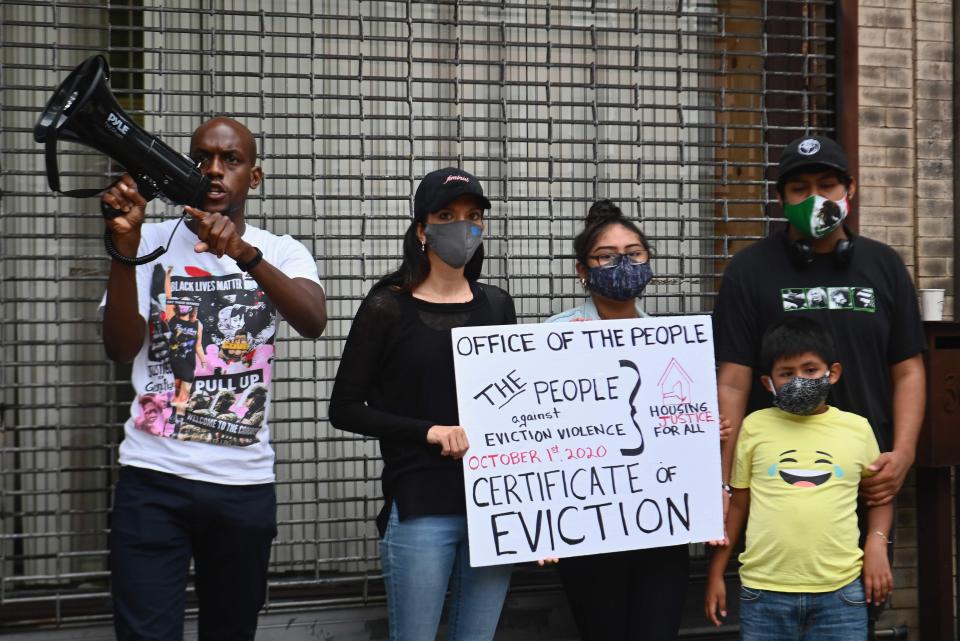
The CDC eviction moratorium was supposed to protect these Americans so long as they met certain conditions. But critics say the order’s vague wording has led to inconsistent implementation and allowed determined landlords to find loopholes.
Moreover, tenants often aren’t aware of the order, and without legal representation, many aren’t equipped to follow through in court.
Since spring, 43 states, along with the District of Columbia, issued their own temporary moratoriums, but as of this week, only 14 were still in place with another handful also set to run out at year’s end.
For Christopher Green of Rochester, New York, the moratorium has been a mirage.
“It’s not helping a lot of people that actually need it,” he said.
Rats and squirrels have left gaping holes in the walls of the apartment where Green, 24, is spending the holidays on edge with his two brothers, unsure whether they’ll still have a place to call home in coming weeks.
What started as a plea to address the rodent issues – and to fix jagged window frames that have left his own and his daughter’s hands cut – has instead turned into a back-and-forth with the landlord over Green’s ability to pay rent after losing his jobs as a line cook and seasonal delivery worker due to COVID-19.
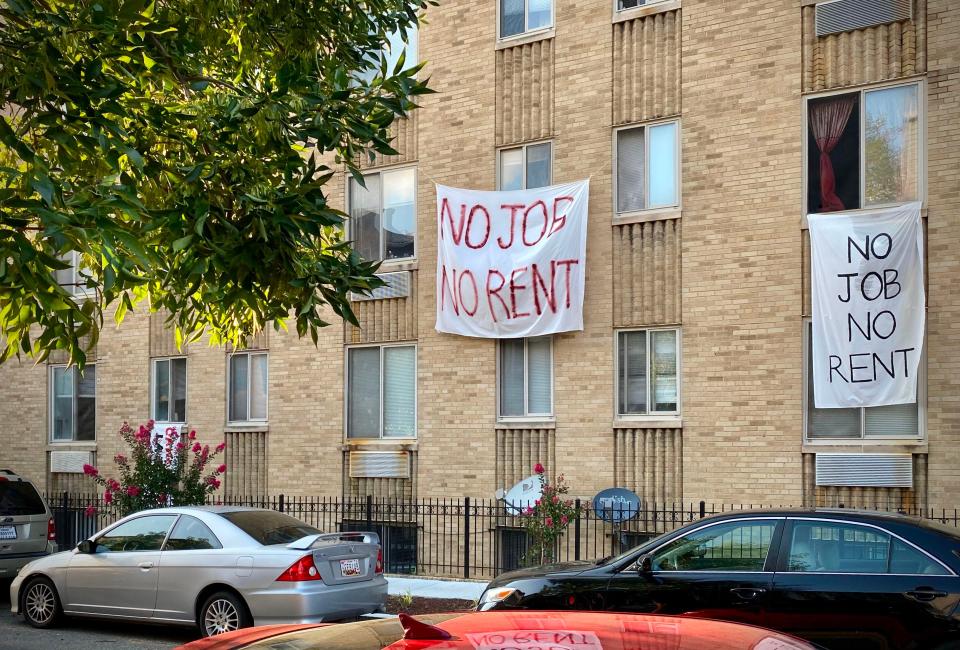
He said he tried to invoke both state and federal moratoria at a fall court date, but a judge told him he didn’t have enough proof that he’d lost work because of the pandemic, and therefore his situation didn’t apply.
Now, his bags are packed with nowhere to go as he waits to see how his landlord, who could not be reached for comment, will proceed.
“I’m just walking through it day by day, every day,” Green said.
Coronavirus vaccine: How to persuade someone to take the COVID-19 vaccine
MIllions of Americans spend bulk of paycheck on rent
Even before the pandemic, about 21 million renters were already considered “cost-burdened,” according to Harvard University’s Joint Center for Housing Studies. That is, they were paying more than 30% of their income toward rent. Of those, 11 million spent more than half of their paychecks on housing.
“The situation for renters has been bad for a long time,” said Chris Herbert, the center’s managing director. “The pandemic has compounded an existing problem and really highlighted the weaknesses in our safety net.”
Herbert made the remarks during a panel discussion held last month in conjunction with the release of a center-issued report on the nation’s housing.
States have tackled the problem to varying degrees, with some urging eviction courts to suspend operations except for emergencies while nonetheless allowing landlords to file proceedings short of kicking their tenants out.
That means that once the moratorium does end, said Yentel of the National Low Income Housing Coalition, evictions will happen quickly “because in many cases all the proceedings will have happened, and the only step left to take will be removing the person from their home.”
Many might opt to leave before evictions proceed, fearful of damaging their long-term credit.
“An eviction can have a long-lasting effect on people’s housing histories and access to credit moving forward,” said Martha Galvez, a senior research associate for the Urban Institute’s Metropolitan Housing & Communities Policy Center. “It can take people a long time to dig out from under that.”
In Cleveland, Legal Aid’s Staudt said that before the pandemic, 90% of evictions were for non-payment of rent, with tenants an average two months behind. Nearly 80% of those evicted were women, 78% were Black, and more than half of those households included children.
Last year, her agency worked with the city and the local United Way to pass a right-to-counsel ordinance that provides free legal representation for low-income tenants facing eviction with children in the home. The ordinance took effect in July.
As a result, about 10% of tenants facing eviction now have court representation, compared to roughly 2% in a typical year. “It’s been a game-changer,” Staudt said.
In addition to familiarity with the legal process, lawyers also bring working relationships with opposing counsel that can facilitate deals and offer credibility for landlords seeking assurance that they’ll eventually get paid.
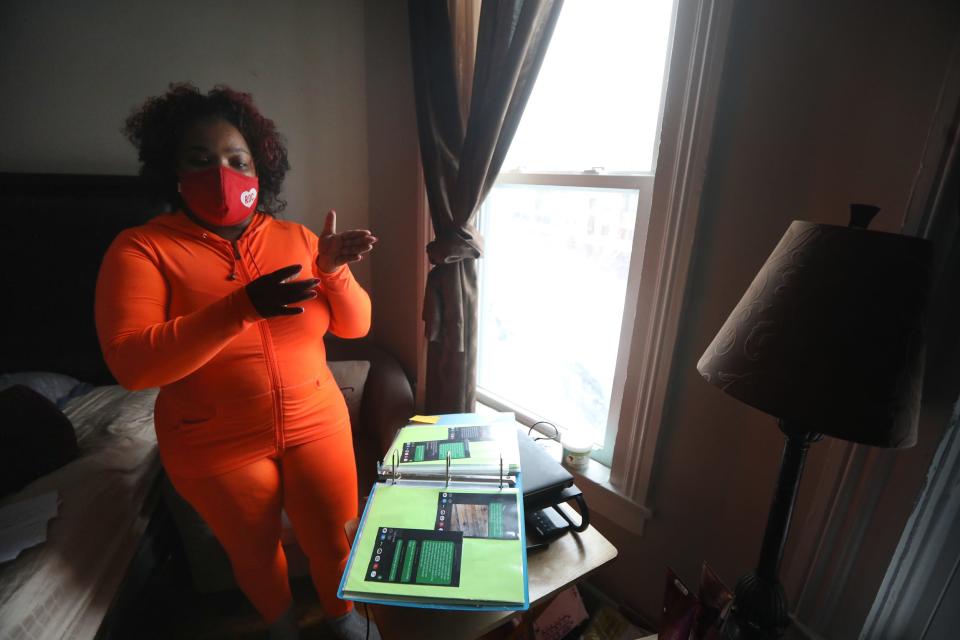
In Texas, both Austin and Dallas this spring instituted temporary grace-period protections for renters, requiring landlords to provide a “notice of proposed eviction” up to 60 days before actual filing and allowing tenants to negotiate payment agreements.
But when housing advocates then attempted to push a similar measure in Houston in August, Mayor Sylvester Turner refused to even put it on the council agenda, opting instead to offer rental assistance funds.
“There’s a very clear resistance to providing protections to tenants in these parts,” said managing attorney Dana Karni of Houston’s Lone Star Legal Aid. “This is not a matter of tenants being deadbeats or preferring to use their money to buy large-screen televisions. This is a matter of tenants being down for the count because of a deadly virus.”
As a result, Houston has seen more than 16,000 eviction filings since March, compared to about 700 in Austin.
“We see people being evicted for one month’s rent, or even part of one month,” said Zoe Middleton, Southeast Texas co-director for Texas Housers, a non-profit that advocates for low-income people.
Evicted tenants have five days to appeal, but with few having legal representation, “we see people doubling up, and so there’s excess COVID infection,” Middleton said. “I’m seeing people sleeping in parks where I’ve never seen people sleeping before.”
Yentel said that’s why, in addition to pressuring Congress to act, her coalition has urged governors and mayors to likewise move to protect their citizens.

“Frankly, their reluctance is baffling to me,” she said, “because it’s their own people in their own states and cities who will be evicted. And those governors and mayors will have to respond to the homelessness crisis.”
Low-income Americans struggle to figure out how moratoriums work
Housing activists insist federal lawmakers must do more to help Americans facing eviction.
Senior research associate Martha Galvez of the Urban Institute’s Metropolitan Housing & Communities Policy Center said that while states and cities have been remarkably creative in adapting existing programs to help those at risk, “there’s only so much that local dollars can do. When the moratorium lifts and the surge in evictions begins to happen, there’s not going to be enough to meet the need.”
Another issue is that many renters – especially those in marginalized communities, like immigrants or seniors without internet access – have been unaware of the moratorium or how to get protection under it, housing activists said.
In addition, critics say the order is written so vaguely that it allows judges to interpret it in a variety of ways, and some landlords claim to have never received the proper paperwork from tenants. And because the order only bans evictions for non-payment of rent, Yentel added, “we’re seeing landlords get creative and find other reasons to evict.”
Many courts are now hearing eviction proceedings virtually – a barrier for those without access to dependable Wi-Fi or devices, or who are simply without technological know-how.
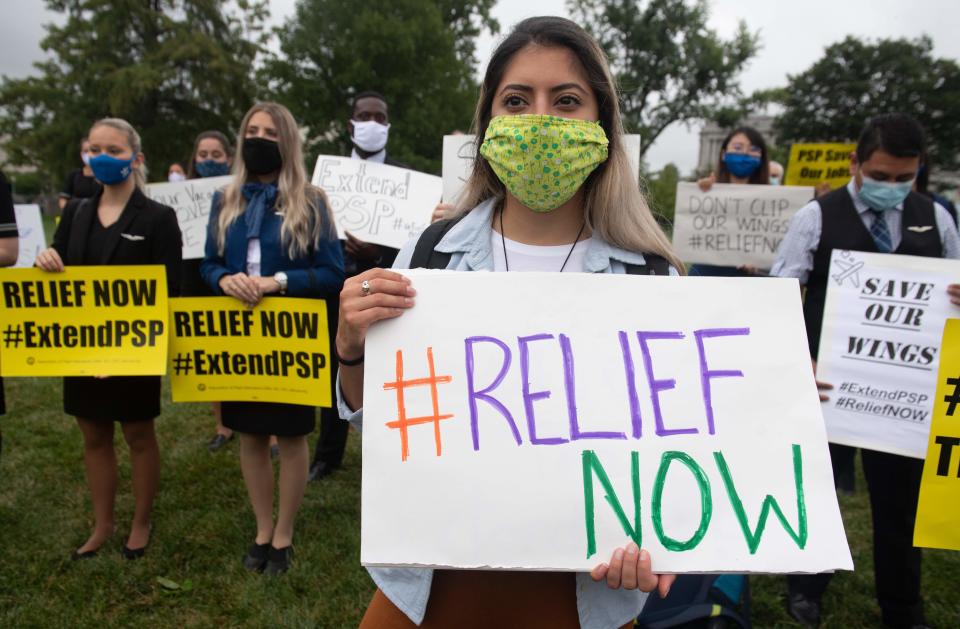
“People are stressed out,” said Middleton of Texas Housers.
With eviction hearings now streamed, she recounted watching last week as a Houston mom attending a Zoom hearing on her phone was threatened with eviction while holding her crying baby.
“The landlord was supposed to send her a copy of the CDC declaration, but it doesn’t seem like that happened, so the judge coached her through it and reset the hearing for a future date,” Middleton said.
Ensuring that landlords get paid is the best way to relieve stress on everyone and provide security going forward, Cleveland’s Staudt said, and ideas have abounded about how to get that done, including direct payments from the government.
“Personally, I don’t care how it happens,” Staudt said. “I just want people to feel more comfortable and safe in their homes, knowing that they’re able to weather without thinking they might have to double up with another family or go to shelter because neither of those are going to help curb the pandemic.”
In New York, Black recently found a job that allowed her to pay off her back rent, but she is worried about other renters in her building who need renovations and may be displaced if they can’t pay what’s due.
“It's a scary prospect to see that someone's trying to take your home away from you in the middle of a pandemic,” Black said.
This article originally appeared on USA TODAY: COVID eviction moratoriums could eventually leave Americans homeless

 money
money 